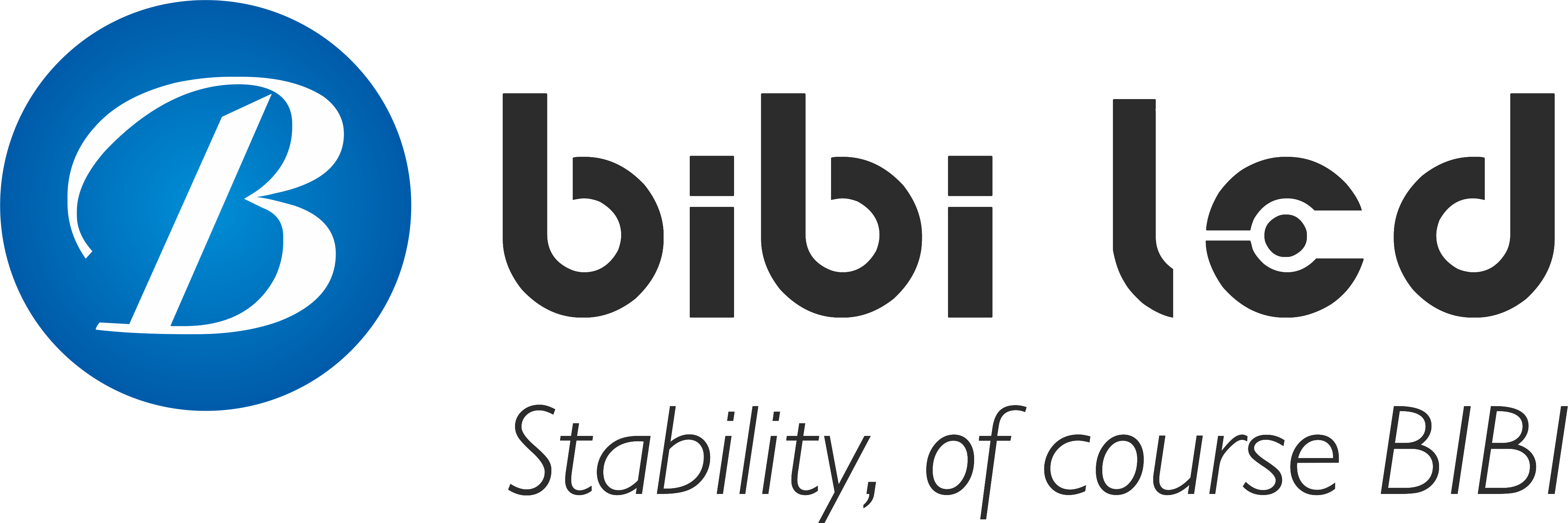Introduction
In crowded stations, accurate information transmission is crucial. Passengers are in a hurry. How to ensure that they get key information in the first place?
Are traditional display devices no longer able to meet the needs of modern stations? The emergence of LED screens has brought a new solution for station information display.
Table of Contents
Advantage 1: Very effective adaptation to the complex lighting environment of the station
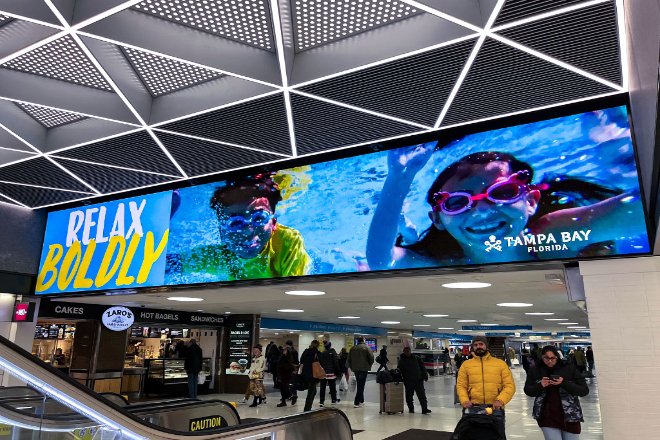
1). Challenges of the lighting environment of the station
The lighting conditions in the station are really complicated. During the day, the sun shines in through the windows, and the light is quite strong.
If it is cloudy or at night, the light will suddenly dim.
And there are all kinds of lights in the station, and the brightness of these lights is also different.
In this way, the information display equipment has to face all kinds of light, sometimes dazzlingly bright, and sometimes too dim to see clearly.
If the equipment cannot adapt to these changes, the words and patterns on the screen will easily become blurred, and passengers will have difficulty reading the information.
2). High brightness solution for LED screens
LED screens are amazing, they can emit light by themselves. Just like there are many small light bulbs, each of which can emit bright light, and the brightness can be adjusted as needed.
In places with direct sunlight, the LED screen can increase the brightness, making the screen brighter than the sunlight, so that passengers can clearly see the information on it.
If it is in a dark place, it can lower the brightness, so that the information can be seen clearly without being dazzling.
Moreover, no matter how big the screen is, the LED screen can make the brightness evenly distributed.
No matter from which angle the passengers look at it, they can see the same clear picture, and there will be no situation where some places are bright and some places are dark. The information is displayed complete and accurate.
3). Visual clarity brought by high contrast
The contrast of the LED screen is very high. Simply put, it can make the bright places very bright and the dark places very dark.
In this way, the words and patterns on the screen can form a great contrast with the background, and look particularly clear. For passengers, this feature is particularly practical.
For example, when looking at the screen from a distance, the high contrast makes it easier for passengers to see the outlines of words and patterns.
If passengers are walking fast and just glance at it, the high-contrast screen can also let them instantly grasp the key information, such as when the train will arrive and which train it is.
In this way, passengers can find the information they need faster, and the information transmission of the station is more effective.
Advantage 2: It can reduce the burden of station operations
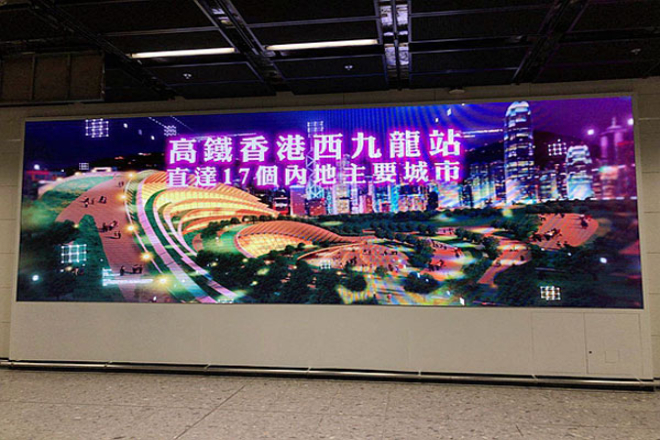
1). High frequency of use of station equipment
The information display equipment at the station is really at a “model worker” level.
Think about it, from morning to night, people come and go in the station, and these devices have to be turned on all the time, and they can’t stop for a moment.
No matter whether it is windy, rainy, or scorching outside, they have to stick to their posts and continuously display important information such as train schedules, train information, and platform changes.
This long-term, uninterrupted operation requires too high durability of the equipment. If the equipment breaks down at any time, it will be troublesome.
Not only will passengers complain, but the operation of the station will also be affected.
2). Durability and stability of LED screens
LED screens are really “hardcore” in this regard. Its hardware design is like wearing a solid “armor”.
The solid-state packaging technology is used to protect the light-emitting diodes firmly, without fear of dust, vibration, or moisture.
This packaging method allows the LED screen to be stable in the environment of the station with large traffic and a complex environment.
Moreover, the power consumption of the LED screen is particularly low, just like a “small energy-saving expert”.
It is not like some traditional display screens, which will heat up and consume a lot of power after a short time.
The LED screen can not only run stably for a long time, but also not easily fail, which is an ideal choice for station information display equipment.
3). Economic advantage of low maintenance cost
When it comes to economical and affordable, the LED screen is also the “king of cost-effectiveness”. Its maintenance cost is surprisingly low. First, the replacement frequency is low.
Because it is durable, there is no need to replace parts frequently, unlike some equipment, which has to replace bulbs and screens after a short time.
Secondly, maintenance is also simple. Even if there is a small problem occasionally, it is not complicated to repair, and professional maintenance personnel do not need to spend too much time.
In this way, the station can save a lot of maintenance costs and equipment replacement expenses, which is a considerable economic account in the long run.
Advantage 3: It can well meet the dynamic needs of the station
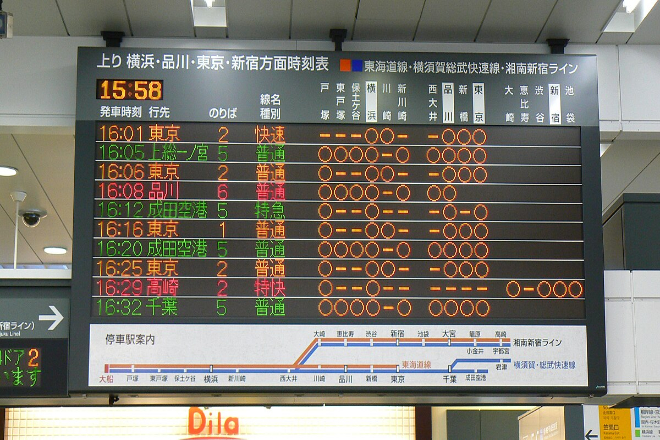
1) The dynamic nature of station information
The station is like a lively big stage, and the information is “changing face” at any time.
The train schedule was originally good, but suddenly it was delayed. It might be bad weather or there was a small problem with the track ahead.
The same is true for the platform. Maybe a train has to stop at a different place. If passengers don’t know these changes, it will be troublesome.
Either they wait for the train in vain or they miss the train.
So, the information of the station must be like “Transformers”, which can change quickly to let passengers know the latest situation at any time.
2). Rapid update capability of the LED screen
The LED screen is the master that can quickly “transform” the station information. It works hand in hand with the station’s dispatching system.
Once the dispatching system finds that the situation has changed, such as the train is delayed, it can immediately pass the message to the LED screen.
After receiving the message, the LED screen is like pressing the “fast forward button”, and the new information can be displayed in a few seconds.
For example, the LED screen in the waiting hall will immediately display the delay notice, telling passengers, “This train is 10 minutes late, don’t worry.”
Moreover, the LED screen can also display different content according to the needs of different places.
In the waiting hall, we will talk more about the train schedule. On the platform, it will focus on reminding of the arrival of the train and the change of the platform.
In this way, no matter where the passengers are, they can see the latest information for the first time.
3). Rapid release of emergency information
If the station encounters an emergency, such as a fire or an accident, the LED screen can immediately become an “emergency rescue pioneer.”
It will immediately switch to emergency mode and tell passengers what happened with the most eye-catching red font and flashing icons.
For example, if platform A is on fire, the LED screen will “shout” loudly: “Platform A is on fire, everyone quickly follow the signs and run to the nearest safe exit!”
At the same time, it will “work” with the broadcast, reminding passengers with text while telling them with sound, so that everyone knows what to do.
If there is a minor accident when the train enters the station, the LED screen will quickly tell everyone about the accident and the station’s response method, so that everyone can have a good idea and will not be in a mess.
Advantage 4: It can greatly improve the information display effect of the station
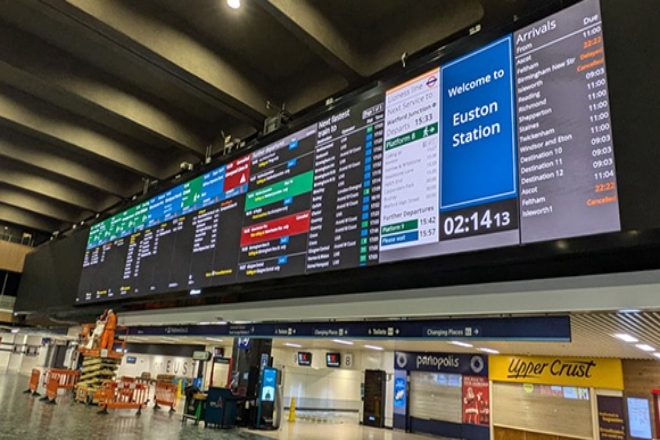
1). Analysis of station space and information display needs
The station is a big place! Like train stations and subway stations, the space is open, and passengers come and go, and they are widely distributed.
The most feared thing for everyone in the station is that they can’t find information. For example, if you are waiting for the train in the corner of the platform, you are far away from the information screen, and it is easy to see the key information, such as the train number and time.
Traditional small screens or paper bulletin boards are really “incapable”. Information cannot be transmitted far, passengers are easy to miss, and the station is easy to be chaotic.
2). Coverage advantages of large-sized LED screens
Large-size LED screens are “big and smart”. It has a large area and can be spliced into a super-large screen.
It can be hung in a conspicuous position in the station, in the center of the station hall, above the platform, or on the wall.
This kind of large screen has super visibility. No matter where you are in the station, you can easily see the content on it.
For example, in the waiting hall of the train station, once the super large screen is on, passengers in each waiting area can clearly see the train number update.
Moreover, the large screen can be flexibly installed according to the shape of the station. It can be a combination of curved screens and multiple screens.
It can cover any complex space in the station. The information coverage is “no dead angle”.
3). High resolution brings details
High-resolution LED screens are the gospel of “detail control”. If the screen resolution is low, the complex train schedules and platform maps in the station will look like “mosaic” and all the details will be gone.
But the high-definition screen is different. The dense information in the train schedule, the train number, the departure station, the terminal station, the departure time, and the ticket gate can all be clearly seen, and passengers can understand it at a glance without misreading.
The platform layout map is even more powerful. The platform area, passages, and safety facilities can all be accurately displayed, so passengers can find places easily and quickly.
Moreover, the high-definition screen is comfortable to look at, and the eyes are not tired. Passengers no longer have to “work hard” to find information in the station, and the experience is directly maximized!
In short, the station has a large space, and information display must rely on large-size, high-resolution LED screens.
This thing can make the information transmitted far and clear, and passengers no longer have to work hard to find information in the station, and the order of the station can be smoother. It is really a “magic weapon”!
Advantage 5: It meets the diverse needs of the station very well
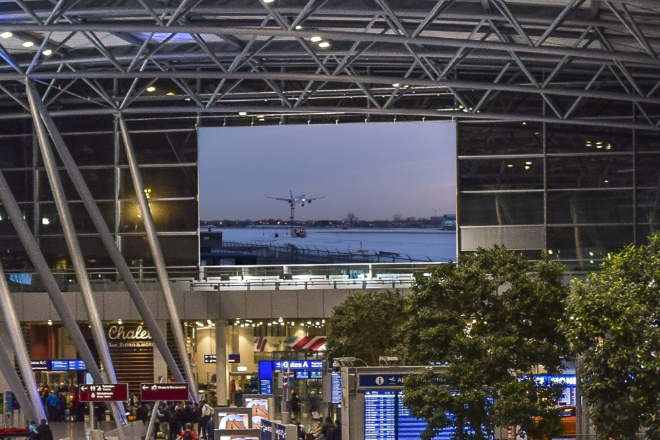
1). Diversity of station information
The information to be displayed at the station is really varied. First of all, the train information is the most important.
Passengers need to know when their train will leave and which platform to wait for the train.
In addition to this, station navigation is also critical, especially for those passengers who come to the station for the first time. They need clear signs to find places such as ticket offices, waiting rooms, and toilets.
Commercial advertisements are also part of the station’s information. After all, the station has a large flow of people and is a good place for publicity.
There is also a weather forecast, which is very useful for passengers on the road, so they can prepare in advance.
In short, the station needs to display a wide variety of information, and each type of information has its own characteristics and importance.
2). Multimedia display capabilities of LED screens
LED screens are really “all-rounders” in this regard. It can display text, images, and videos at the same time, making the information display colorful.
For example, train information can be displayed in clear text so that passengers can see it at a glance; station navigation can be displayed in images to draw an intuitive route map.
Commercial advertisements can use videos to attract attention, make the pictures move, and grab the attention of passengers.
Weather forecasts can be displayed in animations to make weather changes look more vivid.
Through this multimedia display method, LED screens can not only make information more attractive, but also make it easier for passengers to understand and accept, greatly improving the dissemination effect of information.
3). Partition display and personalized customization
The partition display function of LED screens is simply tailor-made for stations. It can divide the screen into different areas, each area showing different types of information.
For example, the upper half of the screen can display train information, the middle part displays station navigation, the lower half plays commercial advertisements, and the corner can also display weather forecasts.
In this way, passengers can get multiple information on one screen at the same time without having to look around.
Moreover, the LED screen can be customized according to the specific needs of the station.
The station can adjust the content and layout on the screen according to different time periods and different activities, making the information display more flexible and diverse, and perfectly meeting the diverse needs of the station.
Advantage 6: It can ensure that the station information is covered without blind spots
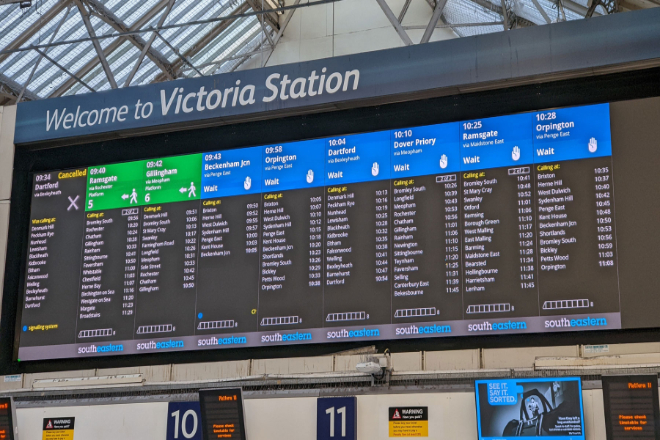
1). Station flow distribution and viewing angle requirements
The flow distribution in the station is really “bustling”, and the passengers’ sight directions are also varied.
In the waiting hall, some passengers sit on chairs and look down at their mobile phones, some stand in line to buy tickets, and some look around to find the platform.
The flow distribution is also uneven. There are a lot of people in places such as the ticket office, security checkpoint, and waiting area, while some corners or passages may have fewer people.
This leads to a complex line of sight for passengers. Some passengers may face the screen directly, some may look at it sideways, and some may glance from a distance.
If the information display device cannot meet these diverse visual needs, it is easy to miss information, and passengers will miss important train information or station notifications.
2). Wide viewing angle of the LED screen
The LED screen is really “broad-viewing” in this regard. It has a very wide viewing angle, which means that passengers can clearly see the content on it even if they are not facing the screen.
For example, when passengers are queuing to buy tickets, they can see the train information even if they stand on the side of the screen.
Or in the waiting area, passengers can easily see the notifications on the screen when sitting in the corner.
This wide viewing angle greatly reduces the possibility of information omission, allowing every passenger to obtain important information in time without worrying about missing key content due to angle problems.
3). Optimized design of multi-angle layout
In order to make the information coverage more comprehensive, the layout of the LED screen in the station is very particular.
By reasonably arranging the position and angle of the screen, the information coverage effect can be further optimized.
For example, a large screen can be set up in the center of the waiting hall so that most passengers can see it; some small screens can be set up at the entrances and corners for passengers who are rushing by or whose vision is blocked.
The screen can also be adjusted in direction according to the station’s architectural structure and the flow of people, so that the angle of the screen can better adapt to the passenger’s vision.
This multi-angle layout design can ensure that there are no information blind spots in the station, so that passengers in every corner can get the information they need in a timely manner.
Advantage 7: It can improve the management efficiency of the station
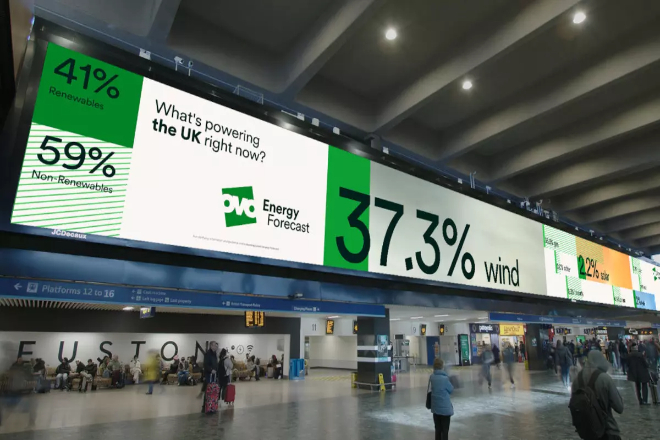
1). Complexity of the station information system
The information display of the station is not isolated; it has to work “hand in hand” with many other systems.
For example, the ticketing system needs to know which trains have sold out and which have remaining tickets.
The dispatching system needs to update the arrival and departure times of the trains at any time, and the monitoring system needs to ensure the safety of the station.
These systems are like “small teams,” and they must cooperate with each other to ensure that the information display of the station is accurate.
If these systems cannot work well together, the information will be delayed or wrong, passengers will be confused, and the management of the station will become chaotic.
2). System integration capabilities of LED screens
The LED screen is like a “super connector”. It seamlessly connects with various systems of the station through various interfaces and protocols.
It’s like building a “highway” for these “small teams” so that information can flow quickly and accurately between them.
For example, when the ticketing system updates the train information, the LED screen can immediately obtain this information through the interface and automatically update the display content synchronously.
The dispatching system adjusts the train schedule, and the LED screen can reflect it immediately.
In this way, the information display of the station can always be kept up to date, the information seen by passengers is always the most accurate, and the management of the station is more efficient.
3). Application of intelligent control function
The intelligent control function of the LED screen is simply a “smart housekeeper”. It has a remote monitoring function, and the staff can check the operating status of the screen at any time in the office without going to the site to check.
The automatic brightness adjustment function is also very powerful. It can automatically adjust the screen brightness according to the light in the station, which is both energy-saving and comfortable for passengers.
There is also a fault alarm function. Once the screen fails, it will immediately issue an alarm to notify the staff to repair it in time.
These intelligent functions not only improve the management efficiency of the station, but also make the equipment run more stable, reduce the trouble caused by faults, and make the operation of the station smoother.
8. Conclusion
The application of LED screens in stations is not only a technological upgrade but also a profound change in the travel experience of passengers.
Through powerful functions and flexible designs, it ensures the coverage of information without dead ends and efficient transmission.
Whether in complex lighting environments or in the face of diverse needs, LED screens can easily cope with them.
Finally, if you want to know more about LED displays, please get in touch with us.
